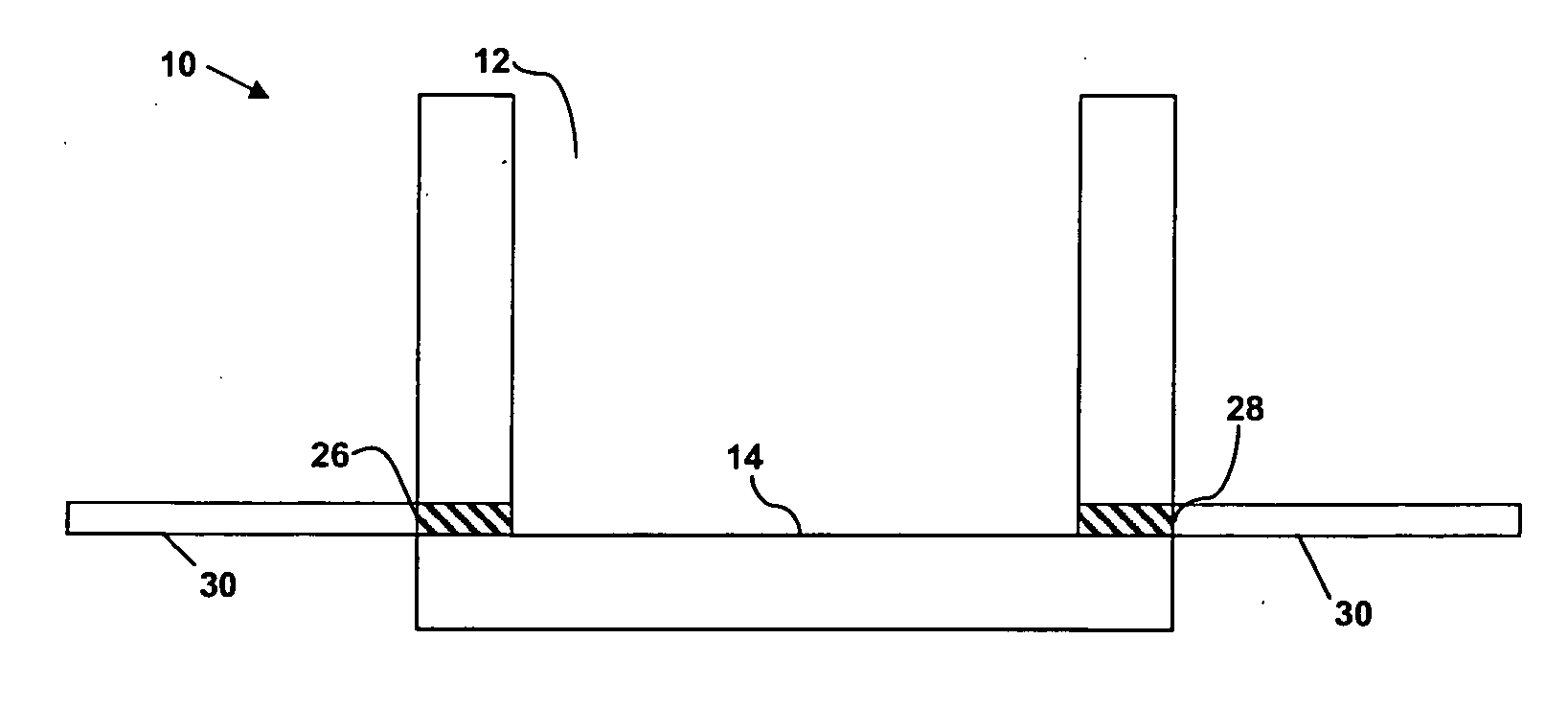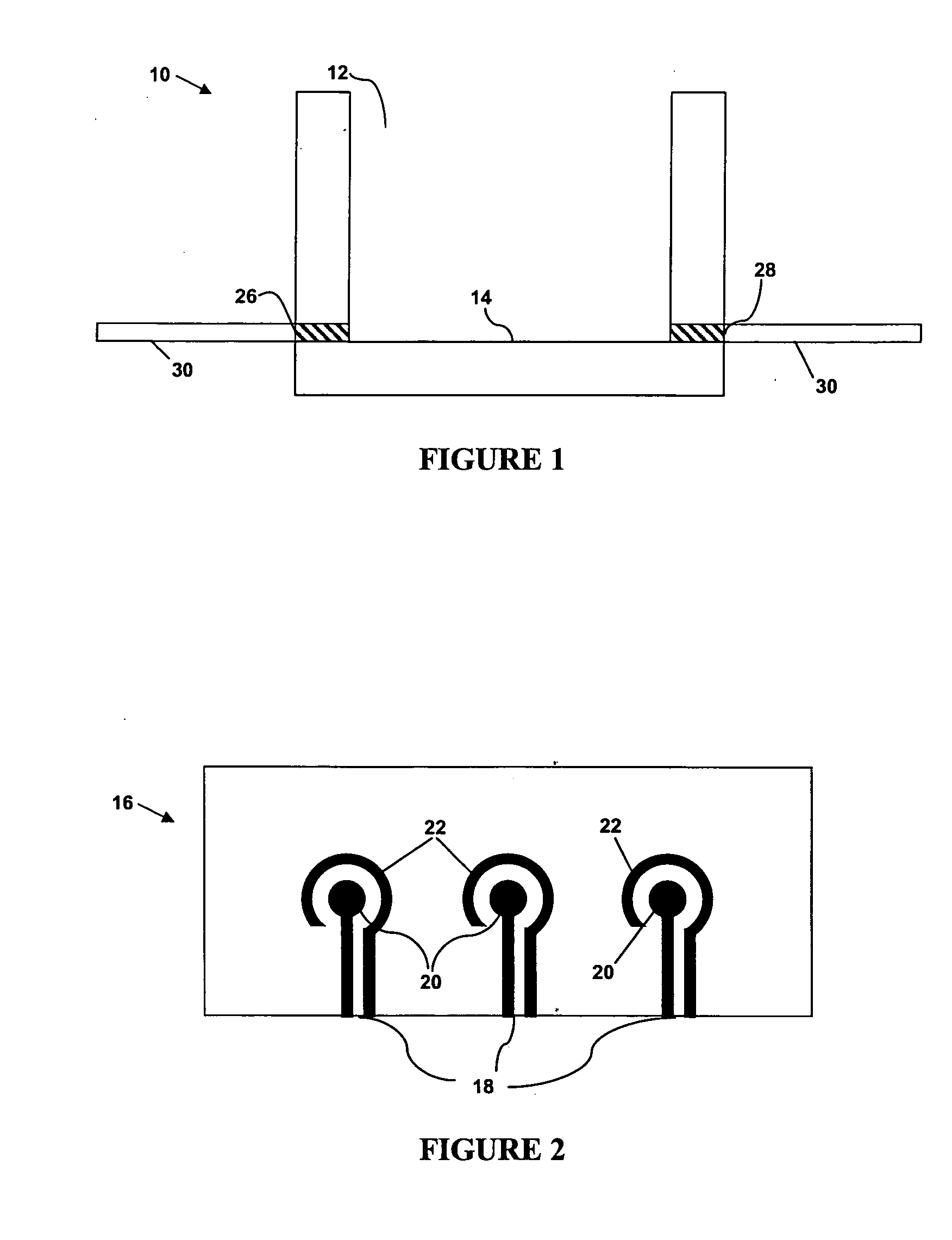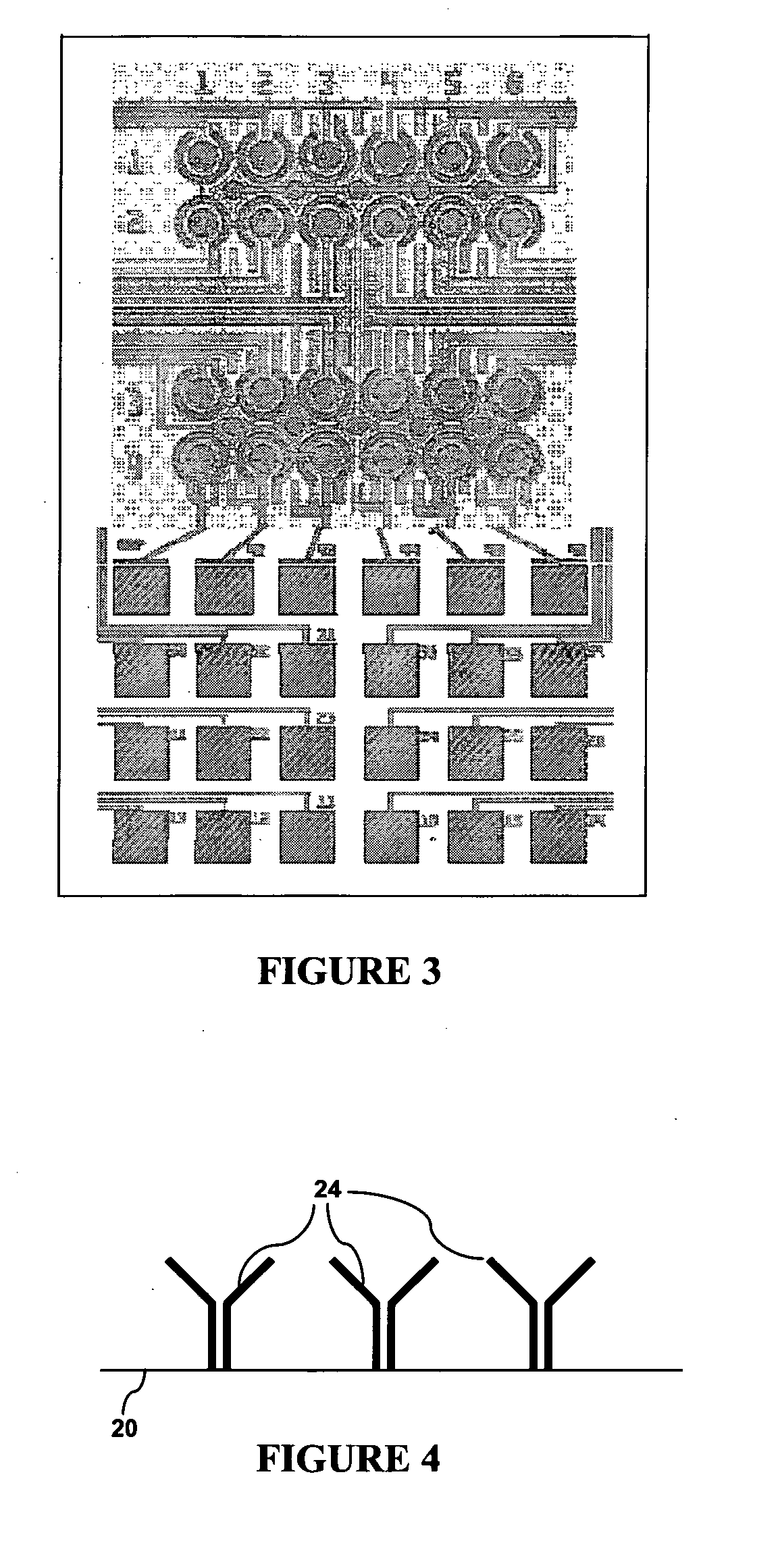Device and method for detection of analyte from a sample
a technology for analyte detection and sample, applied in the field of devices and methods for detection of analyte particles, can solve the problems of not being able to efficiently aid, not having a simple and robust method for circulating epcs, and being highly time-consuming, so as to reduce the non-specific adhesion of analyte particles, improve the sensitivity of impedance detection, and improve the detection efficiency.
- Summary
- Abstract
- Description
- Claims
- Application Information
AI Technical Summary
Benefits of technology
Problems solved by technology
Method used
Image
Examples
example 1
[0111]FIG. 7 shows florescent images of the antibody specifically immobilized on the electrode areas of the microchip, which is surrounded by a silicon oxide biocompatible layer that has been coated with a cell-repellent material to prevent non-specific adhesion of anti-CD34 antibodies prior to immobilization and of cells during cell trapping step.
[0112]The surface coating process and polyethylene glycol (PEG) passivation were adapted from work done by M. Zhang's group (Mandana, V., Wickes, B. T., Castner, D. G., Zhang, M. (2004) Biomaterials 25(16), 3315-3324; Lan, S., Veiseh, M., Zhang, M. (2005) Biosensors and Bioelectronics 20(9), 1697-1708). A mixture of COOH-terminated alkanethiols (a 20 mM solution of 1 / 10 v / v mercapto-undecanoic acid (MUA) / mercapto-propionic acid (MPA) in ethanol) were used to create a self-assembled monolayer (SAM) on the gold electrodes that can be further modified to bind to NH2-amino acids of proteins through activation with N-(3′-dimethylaminopropyl)-N′...
example 2
[0118]FIG. 13 demonstrates the results of testing the lower detection limit of the device using a sample containing a total of 15,000 cells with Jurkat cells as non-target cells and CD34+ cells as target cells. As can be seen, at least a lower limit of 150 CD34+ cells in a total of a mixed sample containing 15,000 cells can be detected in a single batch loading.
[0119]FIGS. 14 and 15 demonstrate the improved detection using multiple batch loading of cells. For each batch, a mixture of Jurkat and CD34+ cells (for a total of 15,000 cells containing 750 CD34+ cells) were loaded into the chamber. The results indicate that the CD34+ cells are retained on the inner electrode from batch to batch loading, cell trapping and washing procedures, resulting in overall increase in % impedance change with increasing number of batches loaded. Thus, if a single batch contains a target cell concentration that falls below the lower detection limit, multiple batch loading may be used to allow for loadin...
example 3
[0121]The described method is performed on a device having three separate chambers each with a separate electrode array. Chamber 1 has antibody A immobilised on the electrode surfaces, chamber 2 has antibody B immobilised on the electrode surfaces, and chamber 3 has antibodies A and B immobilised on the electrode surfaces, as shown in FIG. 18.
[0122]Thus, in chamber 1, cells expressing antigen A (specifically bound by antibody A) and antigen A and B together will be detected and quantified; in chamber 2, cells expressing antigen B (specifically bound by antibody B) and antigen A and B together will be detected and quantified; and in chamber 3, cells expressing antigen A, antigen B or antigen A and B together will be detected and quantified.
[0123]In order to obtain the levels of the various cells of interest, the following calculations are carried out on the signals obtained from the impedance measurements: subtracting the impedance measurements obtained from chamber 1 from those of c...
PUM
| Property | Measurement | Unit |
|---|---|---|
| Concentration | aaaaa | aaaaa |
| Volume | aaaaa | aaaaa |
| Area | aaaaa | aaaaa |
Abstract
Description
Claims
Application Information
 Login to View More
Login to View More - R&D
- Intellectual Property
- Life Sciences
- Materials
- Tech Scout
- Unparalleled Data Quality
- Higher Quality Content
- 60% Fewer Hallucinations
Browse by: Latest US Patents, China's latest patents, Technical Efficacy Thesaurus, Application Domain, Technology Topic, Popular Technical Reports.
© 2025 PatSnap. All rights reserved.Legal|Privacy policy|Modern Slavery Act Transparency Statement|Sitemap|About US| Contact US: help@patsnap.com



